
Geosphere
Scope & Guideline
Bridging Disciplines in the Quest for Earth’s Truth
Introduction
Aims and Scopes
- Tectonics and Structural Geology:
Research on the formation, evolution, and deformation of earth's crust, including fault systems, tectonic settings, and the mechanics of tectonic processes. - Magmatism and Volcanology:
Studies on the processes of magma generation, evolution, and eruption, including the geochemistry and geochronology of volcanic products. - Sedimentology and Stratigraphy:
Investigations into sedimentary processes, depositional environments, and the interpretation of stratigraphic records to understand geological history. - Geochronology and Geochemistry:
Application of dating techniques and geochemical analyses to unravel the timing and mechanisms of geological events and processes. - Paleoclimate and Environmental Change:
Research focusing on past climate conditions and environmental changes through geological records, including sediment cores and isotopic analyses. - Geophysical Methods and Data Integration:
Utilization of geophysical techniques to study subsurface structures, dynamics, and processes, often in conjunction with geological data. - Geological Mapping and Geospatial Analysis:
Emphasis on the development and use of geological maps and spatial analysis techniques to interpret geological features and processes.
Trending and Emerging
- Integrated Geochronological Techniques:
There is a growing trend toward the use of integrated geochronological methods, such as U-Pb dating combined with Hf isotopic analysis, to provide more comprehensive insights into the timing and evolution of geological processes. - Geological Impacts of Climate Change:
Research examining the geological consequences of climate change, including sedimentary responses to glacial retreat and sea-level changes, is increasingly prominent, highlighting the intersection of geology and environmental science. - 3D Geological Modeling and Visualization:
The application of advanced 3D modeling techniques for geological mapping and visualization is on the rise, enhancing the understanding of complex geological structures and processes. - Geodynamics of Active Margins:
There is an emerging focus on the geodynamics of active margins, particularly in relation to tectonic interactions, subduction processes, and associated magmatic activity. - Geophysical Monitoring of Active Faults:
The integration of geophysical monitoring techniques, such as GPS and seismic analysis, to study active fault systems and their implications for seismic hazards is increasingly prevalent. - Multi-scale Studies of Earth Processes:
Research that emphasizes multi-scale analysis—from micro-scale mineral studies to macro-scale tectonic processes—is gaining traction, reflecting a holistic approach to understanding geological phenomena.
Declining or Waning
- Paleozoic and Precambrian Studies:
While still relevant, there has been a noticeable reduction in the frequency of papers focusing exclusively on Paleozoic and Precambrian geologic events, possibly due to a shift in interest towards more contemporary geological processes. - Traditional Stratigraphy without Integrative Approaches:
Research that solely focuses on traditional stratigraphic analysis without integrating geochemical or geochronological methods seems to be less common, as interdisciplinary approaches are favored. - Regional Case Studies:
Although regional studies are important, there appears to be a decline in publications that focus on isolated case studies without broader implications or connections to global geological processes. - Historical Geology:
The focus on historical geology, particularly studies that do not incorporate modern analytical techniques or methodologies, has diminished as the discipline moves toward more dynamic and applied research.
Similar Journals
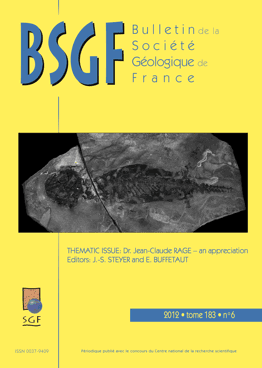
BSGF-Earth Sciences Bulletin
Pioneering Research in Earth and Planetary SciencesWelcome to the BSGF-Earth Sciences Bulletin, a premier open-access journal published by EDP SCIENCES S A that has been illuminating the field of earth sciences since its inception. With an ISSN of 0037-9409 and an E-ISSN of 1777-5817, this journal has established itself as a vital platform for disseminating significant research findings and innovative studies in Earth and Planetary Sciences. Operating out of France, BSGF is recognized for its rigorous peer-review process and its commitment to accessibility, having transitioned to open access in 2018. This stature is reflected in its outstanding rankings, placing it in the Q1 quartile within both Earth and Planetary Sciences and Geology disciplines, and ranking #35/195 overall in the Scopus database. Researchers, professionals, and students alike will find the BSGF invaluable for its high-impact articles, which span a wide array of sub-disciplines, addressing both foundational concepts and contemporary challenges in earth sciences.
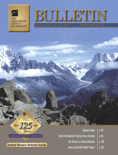
GEOLOGICAL SOCIETY OF AMERICA BULLETIN
Advancing Earth Sciences Through Rigorous ResearchThe Geological Society of America Bulletin (GSA Bulletin), with ISSN 0016-7606 and E-ISSN 1943-2674, is a premier scholarly journal published by Geological Society of America, Inc. Based in the United States, this journal has been a cornerstone of geological research since its inception in 1890, making significant contributions to the understanding of Earth sciences over more than a century. Recognized for its rigorous peer-review process, the GSA Bulletin currently holds a prestigious Q1 ranking in Geology, positioning it among the top 14 journals in Earth and Planetary Sciences in terms of Scopus ranking, reflecting the high quality and impact of the research it publishes. Researchers, professionals, and students alike benefit from its comprehensive coverage of geological topics, including sedimentology, volcanology, and paleontology, which supports the advancement of knowledge in the geosciences. While the journal is not open access, it continues to provide a vital platform for innovative research and critical discussions that shape the future of geology.
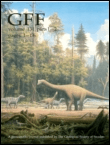
GFF
Elevating Research Standards in Geology and Paleontology.GFF is a prestigious academic journal dedicated to advancing research in the fields of Geology and Paleontology. Published by Taylor & Francis Ltd in the United Kingdom, GFF serves as a vital platform for disseminating innovative findings and fostering discussions among researchers, professionals, and students alike. With a noteworthy impact factor reflecting its significance in the scientific community, GFF has achieved Q2 ranking in both Geology and Paleontology, underscoring its commitment to high-quality scholarship. The journal has been operational since 1872, accumulating a rich history of contributing to our understanding of earth sciences. It currently ranks #133 out of 321 in Earth and Planetary Sciences - Geology, and #50 out of 113 in Paleontology according to Scopus rankings. Although it does not offer an open access option, GFF remains accessible through various academic databases, ensuring that cutting-edge research reaches a wide audience. Its comprehensive scope aims to explore critical advancements in geological and paleontological sciences, making it an essential resource for those committed to exploring the intricacies of our planet’s past and present.
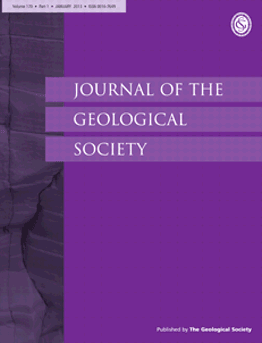
JOURNAL OF THE GEOLOGICAL SOCIETY
Empowering Geoscientists with High-Impact ResearchJOURNAL OF THE GEOLOGICAL SOCIETY, published by GEOLOGICAL SOC PUBL HOUSE, is a premier academic journal dedicated to advancing the field of geology. With a rich history dating back to 1845 and continuously published until 2024, this journal caters to a diverse audience of researchers, professionals, and students involved in earth sciences. The journal is recognized for its high impact factor, situating it in the top Q1 category in the field of geology, as indicated by its impressive Scopus rank of #49 out of 321, positioning it at the 84th percentile in Earth and Planetary Sciences. This esteemed scholarly platform promotes rigorous peer-reviewed research, ensuring that novel findings contribute to the global geological discourse. Although it operates under a subscription model, the journal's archive offers valuable insights for anyone pursuing excellence in geological research. The JOURNAL OF THE GEOLOGICAL SOCIETY stands as a vital resource for disseminating scientific knowledge and fostering educational growth within the field.

BULLETIN OF GEOSCIENCES
Illuminating the Intersections of Geology and EnvironmentBULLETIN OF GEOSCIENCES, published by the prestigious Czech Geological Survey, stands as a pivotal resource in the fields of Earth and Planetary Sciences and Environmental Science. Since its inception in 2003, the journal has been committed to advancing knowledge through high-quality research, currently holding a commendable Q2 ranking in both disciplines. With its focus on diverse and innovative topics, BULLETIN OF GEOSCIENCES provides an essential platform for researchers, professionals, and students aiming to disseminate and access impactful studies. The journal is indexed in Scopus, ranking #78/195 in General Earth and Planetary Sciences and #110/233 in General Environmental Science, reflecting its significant contribution to academia. Publishing from Prague, Czech Republic, this journal invites contributions that illuminate the interactions between geological processes and environmental phenomena, ensuring an inclusive and accessible approach to crucial global issues.
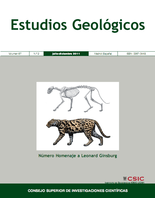
ESTUDIOS GEOLOGICOS-MADRID
Connecting Researchers with Earth’s Secrets Since 1976.ESTUDIOS GEOLOGICOS-MADRID is a prominent journal in the field of geology, published by the esteemed Consejo Superior de Investigaciones Científicas (CSIC) in Spain. Established in 1976, this Open Access journal has been a vital resource for researchers and professionals since its inception. With an impact factor reflecting its contribution to the Earth and Planetary Sciences community, ESTUDIOS GEOLOGICOS-MADRID currently holds a Q3 category ranking in Geology as of 2023, showcasing its relevance and quality within the discipline. The journal publishes a diverse array of geological studies, ensuring wide-reaching access to significant research findings, thereby promoting collaboration and knowledge sharing. Established as a platform for both foundational research and applied geology, this journal fosters academic growth and contributes to understanding the Earth’s processes. Researchers, professionals, and students are encouraged to explore its extensive archive, which includes publications from 1976 to the present. For more information, visit the journal's editorial office at Editorial CSIC, C/VITRUVIO 8, 28006 MADRID, SPAIN.
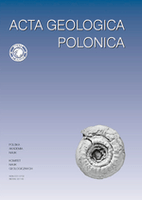
ACTA GEOLOGICA POLONICA
Exploring the depths of Earth and planetary sciences.ACTA GEOLOGICA POLONICA is a distinguished journal published by the Polska Akademia Nauk, in collaboration with the University of Warsaw's Geology Department. Since its inception, it has served as a vital platform for disseminating innovative research in the field of Geology, reflecting a commitment to advancing scientific knowledge in Earth and planetary sciences. With an ISSN of 0001-5709 and an E-ISSN of 2300-1887, this journal provides a rigorous review process and is classified in the Q3 quartile for Geology as of 2023, indicating its growing influence in the discipline. Despite not being open access, the journal facilitates meaningful contributions that span a range of geological topics from fundamental research to applied sciences, thereby enriching the academic landscape. Researchers, professionals, and students alike are encouraged to engage with the valuable findings and discussions contained within its pages, which continue to shape the future of geological inquiry.
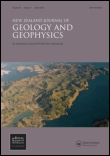
NEW ZEALAND JOURNAL OF GEOLOGY AND GEOPHYSICS
Illuminating the Complexities of Our Planet's Processes.NEW ZEALAND JOURNAL OF GEOLOGY AND GEOPHYSICS, published by Taylor & Francis Ltd, stands as a prominent forum dedicated to the interdisciplinary exploration of geological and geophysical phenomena. With an impact factor that situates this journal in the prestigious Q1 category across key subjects—namely Earth and Planetary Sciences, Geology, and Geophysics—it is a critical resource for researchers, professionals, and students alike. The journal has been operational since 1958 and continues to contribute valuable insights into the complexities of the Earth's processes. Although it does not currently offer Open Access options, its broad readership benefits from an extensive archive of high-quality research findings that span from 1958 to 2024. Located in the United Kingdom, the journal remains a pivotal player in advancing the understanding of Earth's systems, making significant contributions to both academic inquiry and practical applications in the field.
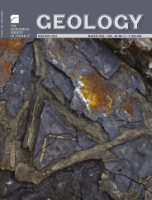
GEOLOGY
Connecting Researchers to the Heart of Earth's ProcessesGEOLOGY, published by the Geological Society of America, Inc, is a premier journal dedicated to advancing knowledge, research, and discussion in the field of geology. With an ISSN of 0091-7613 and an E-ISSN of 1943-2682, this journal stands out with an impressive Q1 ranking in Geology for 2023, positioning it among the top journals in the realm of Earth and Planetary Sciences, specifically holding a remarkable rank of 11 out of 321, reflecting its 96th percentile status. This journal aims to publish innovative research articles that cover all aspects of geology, from tectonics and sedimentology to paleontology and mineralogy, offering invaluable insights for researchers, professionals, and students alike. Although not currently open access, GEOLOGY maintains a rigorous review process ensuring the quality and integrity of the research it publishes. For more than five decades, spanning from its inception in 1973 to the upcoming publications in 2024, GEOLOGY has been instrumental in shaping the geological discourse and continues to be a vital resource for the scientific community.
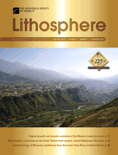
Lithosphere
Empowering Scholars to Shape the Future of Geoscience.Lithosphere, published by GEOSCIENCEWORLD, is a premier open access journal that has been at the forefront of geological research since its inception. With the ISSN 1941-8264 and the E-ISSN 1947-4253, this journal serves as a vital resource for researchers, professionals, and students interested in Earth and planetary sciences, particularly in the field of geology. Its impressive ranking of Q2 in the 2023 category indicates its vital role in disseminating high-quality, impactful research. The journal’s commitment to open access since 2018 enhances its reach, providing global accessibility to cutting-edge studies that span a diverse range of geoscientific topics, from tectonics to sedimentology. With Scopus Rank #88 out of 321 in Earth and Planetary Sciences, it offers a strong platform for scholars to share their findings and engage with the latest advancements in the discipline. As the journal continues its convergence from 2009 to 2024, Lithosphere remains a crucial publication for those striving to deepen their understanding of Earth's systems.